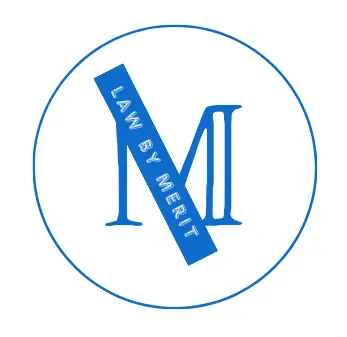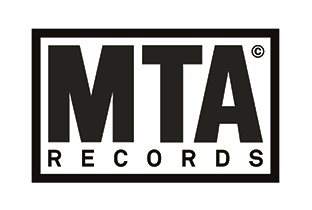Before taking any action, it’s crucial to understand why your license was suspended in the first place. Common reasons for suspension include accumulating too many traffic violations, DUI convictions, unpaid fines, or failure to maintain auto insurance. Understanding the cause will help you address any underlying issues and avoid future suspensions.
Step 1: Complete Suspension Period
During your suspension, you must abide by all the terms and conditions set by the court or DMV. This may include attending traffic school, paying fines, or completing a mandatory waiting period. Ensure you fulfill all these requirements before moving forward.
Step 2: Check Eligibility for Reinstatement
Before applying for reinstatement, confirm your eligibility. Requirements vary by jurisdiction and the reason for suspension, but common conditions include serving the suspension period, paying all fines and fees, and completing any required educational programs.
Step 3: Obtain Necessary Documentation
Gather all required documentation. This usually includes proof of insurance, completion certificates for any required courses (such as defensive driving or DUI programs), and a valid ID.
Step 4: Attend a Hearing (If Required)
Depending on the nature of your suspension, you may need to attend a reinstatement hearing. This is more common for serious offenses like DUI. Prepare for the hearing by gathering any supporting documents or witnesses that can help your case. Be honest and contrite during the hearing.
Step 5: Pay Reinstatement Fees
Most jurisdictions require you to pay reinstatement fees to cover administrative costs. Check with your local DMV for the exact amount and acceptable payment methods. Ensure all outstanding fees are settled.
Step 6: Get an SR-22 Insurance Certificate (If Required)
If your suspension was due to a serious traffic offense or DUI, you may need to obtain an SR-22 insurance certificate. This is a document that proves you carry the required insurance coverage. Contact your insurance provider to request an SR-22, and make sure they file it with the DMV.
Step 7: Pass Required Tests
In some cases, you may need to retake the written and practical driving tests. Study the driver’s handbook and practice driving to ensure you’re ready for these exams. Schedule and pass these tests as necessary.
Step 8: Visit the DMV or Equivalent Office
Go to your local DMV or equivalent office in person. Bring all the necessary documentation, including your ID, proof of insurance, completion certificates, and payment receipts for reinstatement fees. Be prepared to wait in line, and make an appointment if your local office allows it.
Step 9: Apply for License Reinstatement
At the DMV, submit your application for license reinstatement. This may involve filling out specific forms provided by the DMV. Pay any remaining fees, and provide any additional information required during the application process.
Step 10: Wait for Processing
After submitting your application, your information will be reviewed by the DMV. Processing times can vary, so be patient. You may receive a temporary driving permit while your application is being processed.
Step 11: Receive Your Reinstated License
Once your application is approved, you’ll receive your reinstated driver’s license. It’s essential to review it for accuracy and any specific restrictions or conditions. Ensure you abide by all rules to maintain your driving privileges.
Step 12: Maintain Good Driving Habits
Now that your license has been reinstated, it’s crucial to maintain good driving habits to avoid future suspensions. Follow all traffic laws, drive responsibly, and stay informed about any updates or changes to driving regulations.
In conclusion, the process of getting back on the road after a suspended license has been dismissed involves several steps, each crucial to successfully regaining your driving privileges. The key is to be patient, organized, and diligent in meeting all requirements set by your local DMV or equivalent authority. Always seek guidance from the relevant authorities to ensure you’re following the specific procedures applicable to your situation. Remember that driving is a privilege, and responsible behavior on the road is essential to maintaining it.
RELATED:
Is It Illegal To Lean Or Sit On Someone’s Car? (Answered)
Is It Illegal To Leave A Note On Someone’s Door? (Answered)
Why Would A Constable Come To My House?
Frequently Asked Questions
1. Can I Drive While My License is Suspended But the Suspension is Dismissed?
No, you should not drive during the period of suspension, even if you’re in the process of having the suspension dismissed. Driving with a suspended license is illegal and can lead to more severe penalties, including fines, extended suspension periods, and even imprisonment. It’s essential to wait until your license is officially reinstated.
2. How Long Does the License Reinstatement Process Usually Take?
The time it takes to reinstate a suspended license can vary widely depending on factors such as the reason for the suspension, your jurisdiction, and whether you’ve fulfilled all requirements. Typically, it can take several weeks to a few months. It’s advisable to start the process as soon as you’re eligible to minimize any downtime.
3. Do I Need to Hire an Attorney to Reinstate My License?
In most cases, hiring an attorney is not required to reinstate your license, but it can be helpful, especially if you’re facing complex legal issues or a reinstatement hearing. An attorney can provide legal guidance, ensure you meet all requirements, and represent your interests effectively.
4. What Happens If I Don’t Pay My Reinstatement Fee?
If you fail to pay your reinstatement fee, your license will likely remain suspended. It’s a crucial step in the reinstatement process, and neglecting it will prevent you from regaining your driving privileges. Make sure to pay the fee as instructed by your local DMV.
5. I Paid My Reinstatement Fee. What Should I Do Next?
Once you’ve paid your reinstatement fee, you should continue following the reinstatement process outlined by your local DMV or equivalent authority. This typically involves submitting the required documentation, attending hearings if necessary, and passing any required tests. Keep track of your progress and be patient as your application is processed.
6. If I Pay My Reinstatement Fee, Will My License Still Be Suspended?
Paying the reinstatement fee is a necessary step in the reinstatement process, but it does not automatically lift the suspension. Your license will remain suspended until you complete all the required steps, which may include serving the suspension period, attending hearings, passing tests, and fulfilling any outstanding obligations. Only after successfully completing these requirements will your license be reinstated.
In summary, reinstating a suspended driver’s license involves a multi-step process that includes paying the reinstatement fee but also requires fulfilling various other conditions. It’s essential to adhere to your jurisdiction’s specific guidelines and be patient throughout the process. Remember that driving with a suspended license can lead to severe consequences, so it’s crucial to follow all legal procedures diligently to regain your driving privileges. If you have further questions or concerns, don’t hesitate to contact your local DMV or consult with an attorney for guidance tailored to your situation.
Last updated on: April 11, 2024





